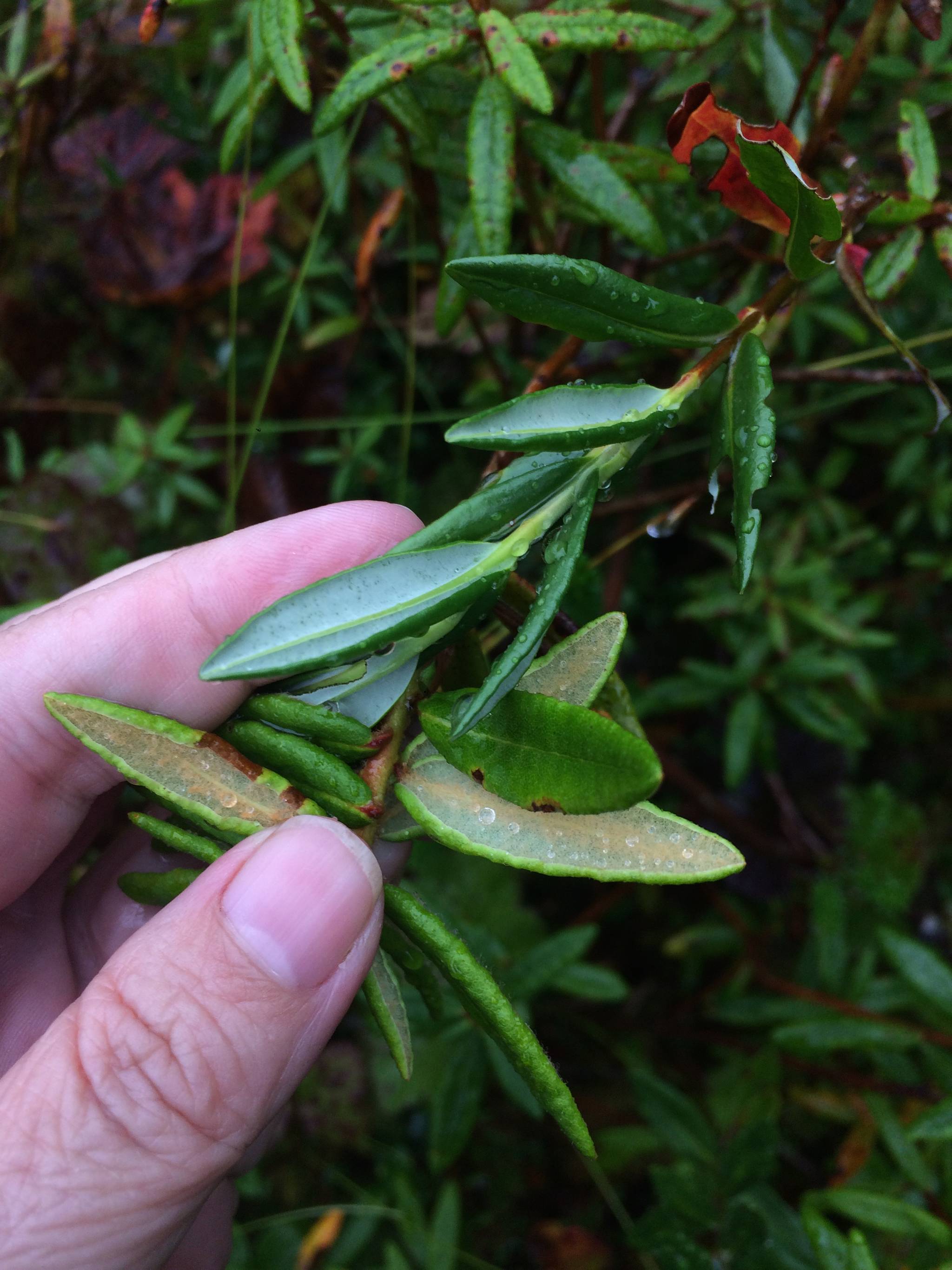I often think about how I am connected to Alaska, particularly this spot in Southeast. It is an area that captivates both visually, physically, and in its unique smells. When I briefly lived in Majuro, a near barren atoll, I would long for the post-rainfall scent of Juneau.
Part of my pleasure in traveling to different places is to be reminded of childhood smells. While walking through Golden Gate Park, I was captivated by the wind carrying the smell of pine and blackberry memories. Southeast has its own sensual quality, the wet earth smell when mushroom hunting, the rich funk of low tide, or the occasional odor of a salty sea.
There are some foods that I like to forage for the simple pleasure their scent brings. One of those is labrador tea. Walking in a muskeg area with boots sinking into the uneven ground, a warm day in the fall is full of a lemony odor that is warm and inviting.
I might be out harvesting for cranberries or lingonberries, both of which grow in the same location, but I often find I can’t help but pick a few leaves to brew into tea to warm me as I clean the berries. Two plants share similarities in appearance and location: labrador tea and bog rosemary. Both have a surfboard shaped leaf that extends out from a center point.
However, labrador tea has a woolly underside that distinguishes it from its poisonous neighbor. In younger plants, the leaf bottom is whitish and becomes an orange to a brown color as it ages. The flowers are also different. Bog rosemary has a pink bell-shaped flower while labrador tea has a cluster of white flowers.
I usually take the leaves and throw some in a pot of water to steep while putting the others in a dehydrator to preserve. Although some people use the stem and flowers, most use a few leaves steeped in a pan of water to make the brew. The leaves can be used fresh or dried for later use.
Steep until the color is orange and before the liquid turns brown. Although I know some people who keep a continuous pot of labrador tea on the woodstove, the alkaloids become more prominent the longer it sits.
Like black tea, labrador tea contains tannins, which create the sharp bitter flavors. Many plant books have cautionary advice about letting it sit too long as it brings out the toxic alkaloids, which have been hazardous to livestock.
Just as the different senses connect us to this land, so does harvesting and using local plants. Drinking the tea takes me back to the long ancestry of this plant, not only here but throughout the United States. It was introduced to the first Europeans by Natives and was drunk as Hudson Bay tea when England placed a tax and Chinese tea was dumped into Boston Harbor. However, the labrador tea that I drink takes me back to the muskeg and the scent of Southeast.
Corinne Conlon gardens, forages and writes in Juneau. This is the last Gathering Alaska column for 2017. Thanks for reading.
“Gathering Alaska” is a Capital City Weekly column about foraging in Southeast Alaska.

